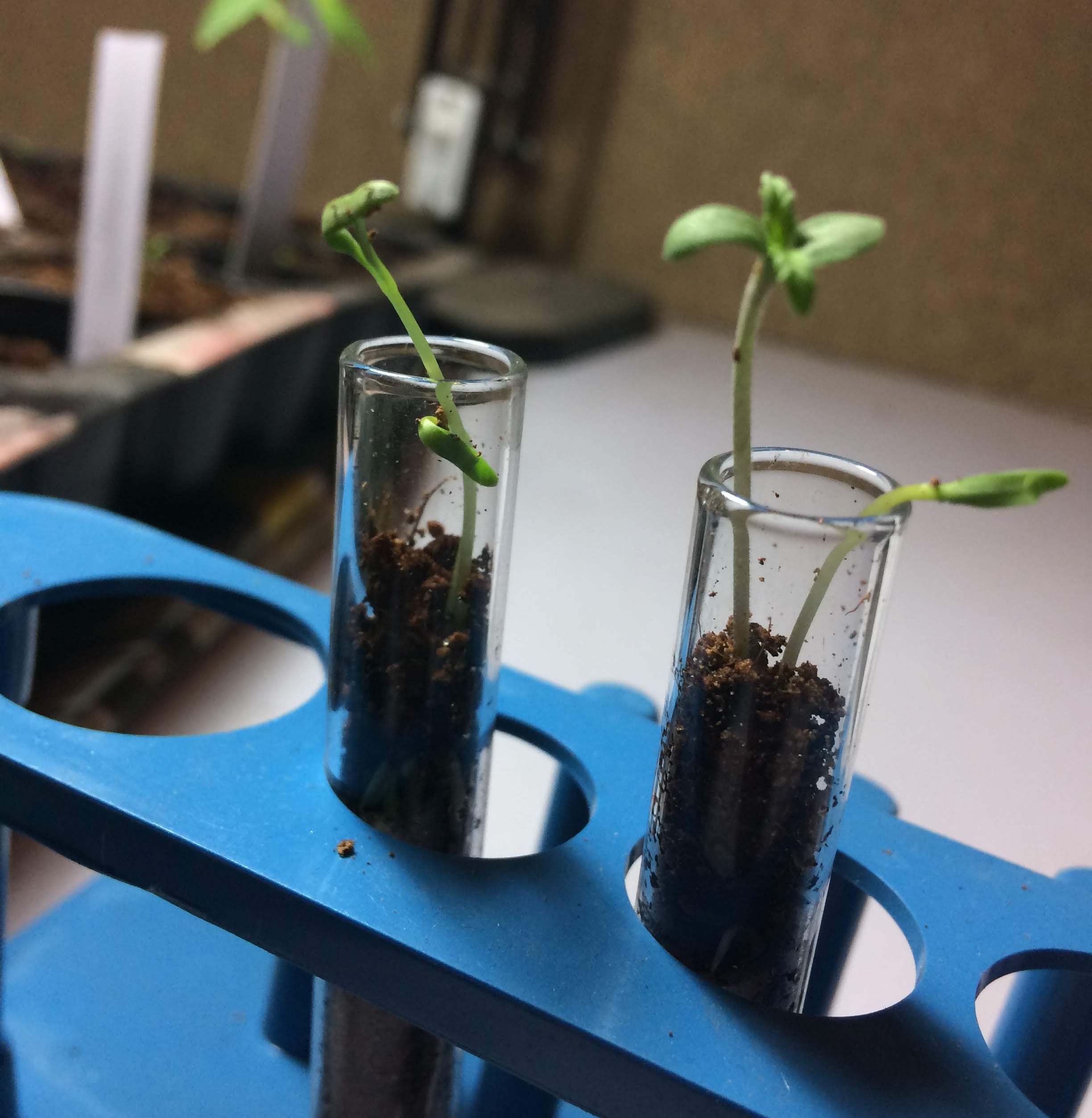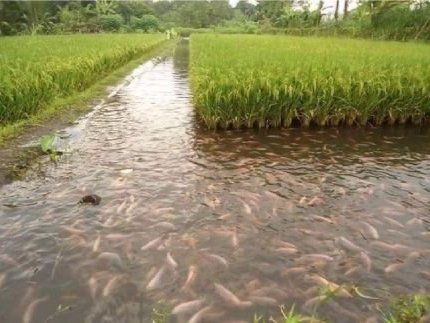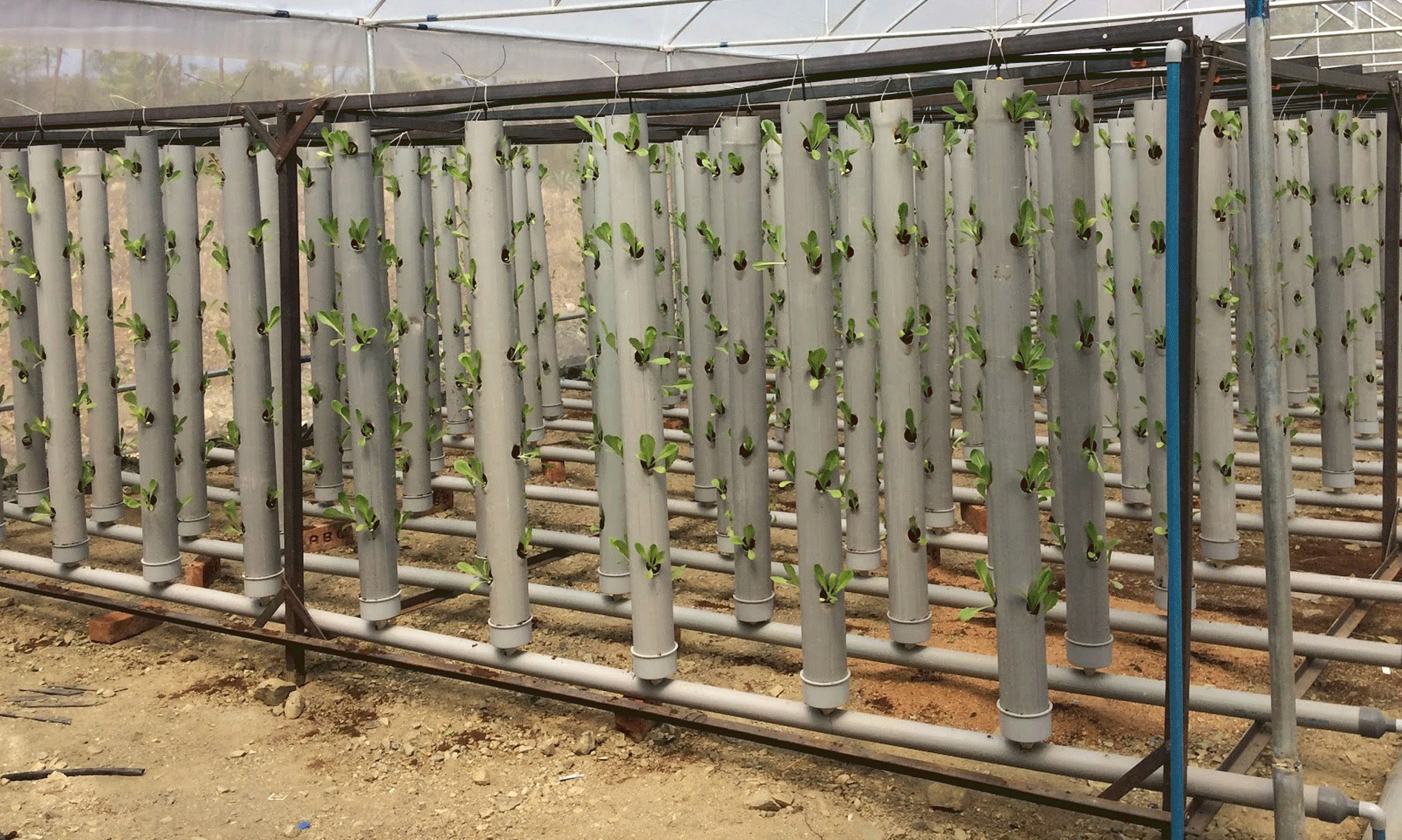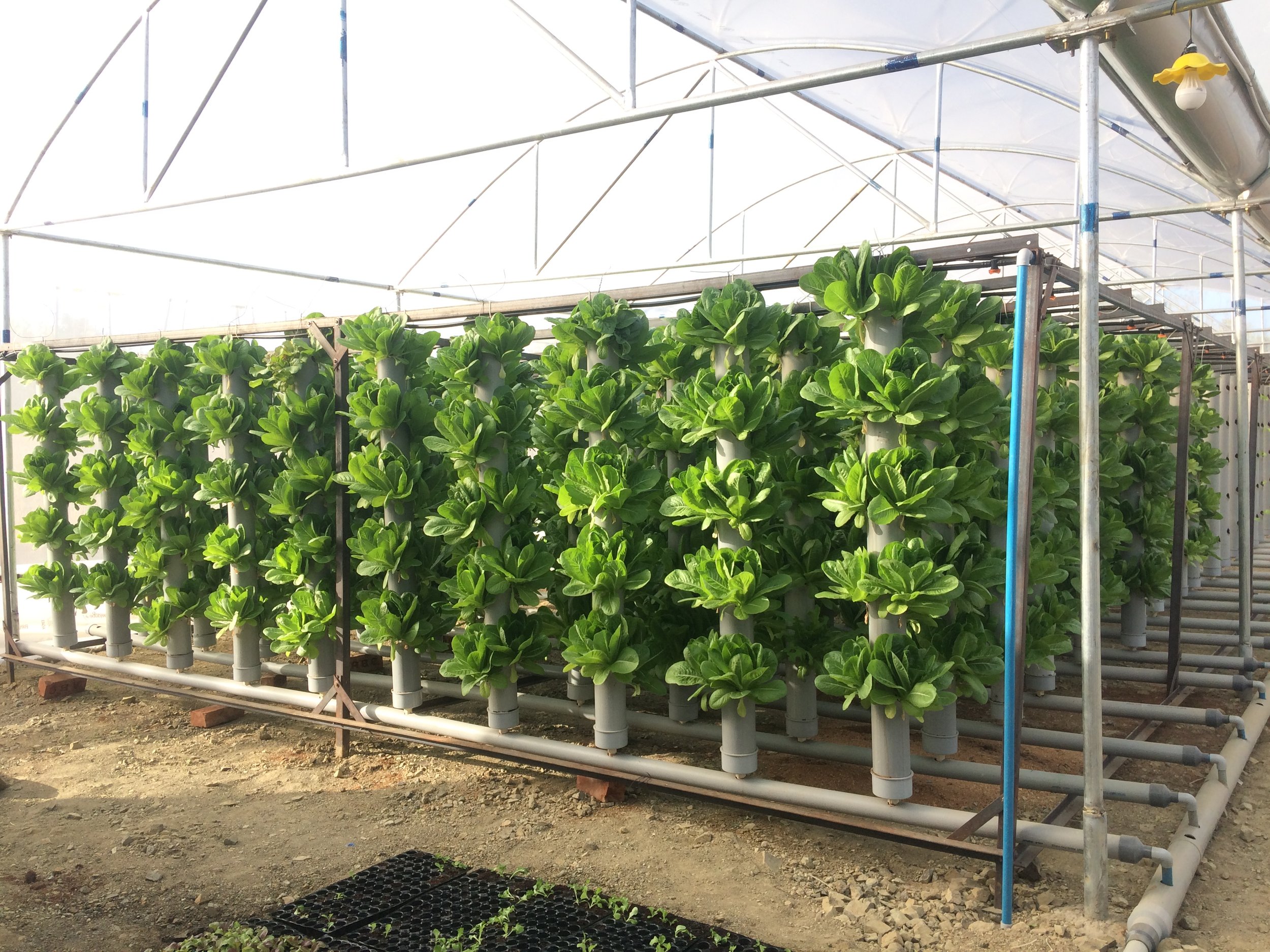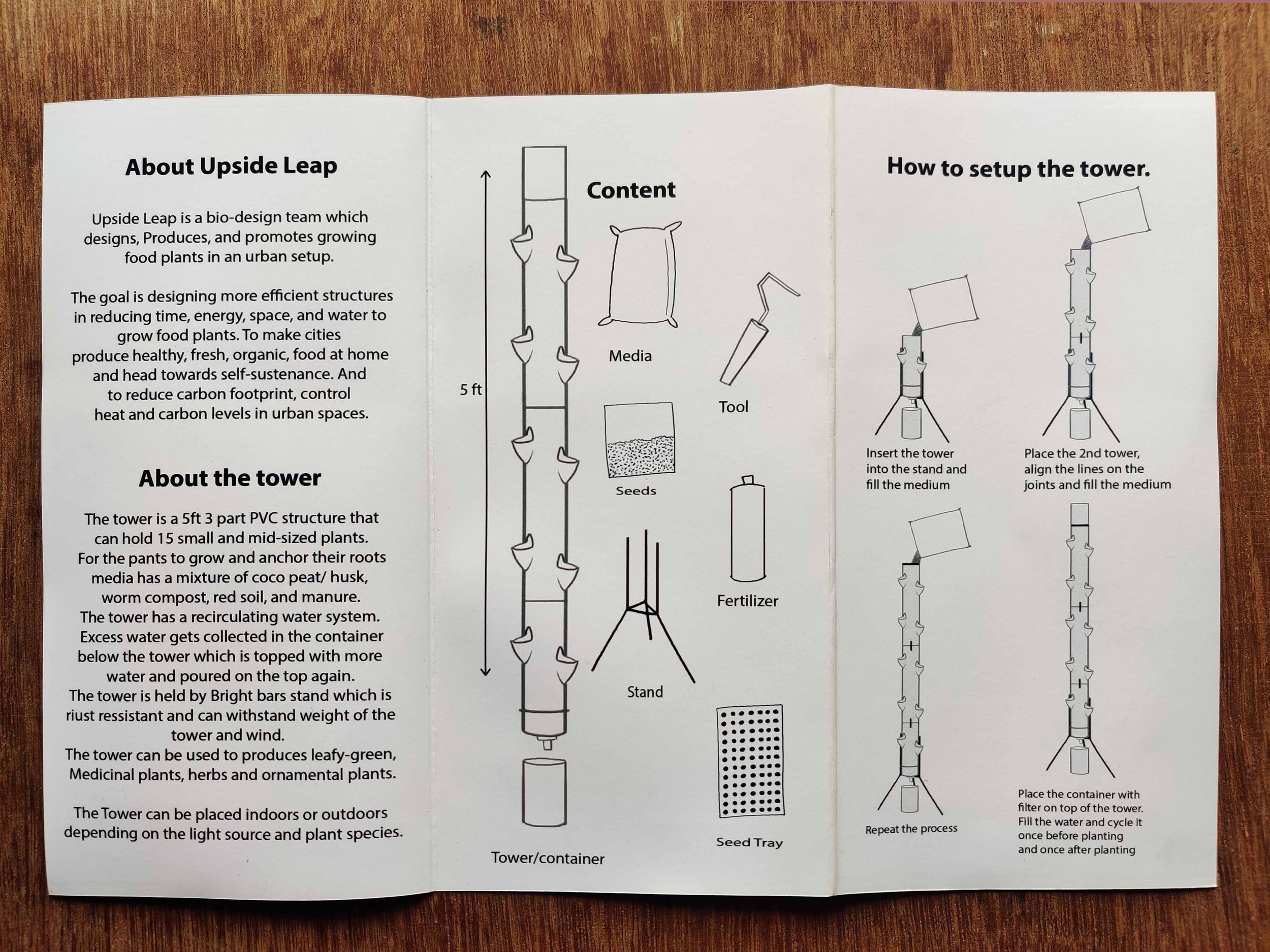Upside Leap
Food production system designed for urban space to grow 15 times more produce, with 80% less energy consumption and 95% less water usage.
Research / Design / Build - Hanoch Samuel
Production support - Hellinger Samuel
Farming and construction support - Shiva kumar, Ravi, Sandesh, Wahab, Seenappa
Plant physiology / Biochemistry / Design Information - YouTube / Google Moral support - Sultan (my dog)
Duration / Process
Phase - 1 (2017-2019)
Research / Test / Design / Prototype / Execute / Result
Phase - 2 (2020 -2021)
User Research / Re-design / Prototype / Test / Execute / Result
Phase 1
Design an inexpensive and efficient organic urban farming system.
Goal
Domain Research
Plants require 16 essential mineral to grow.
The initial research began with understanding plants physiology and their needs to thrive. During this stage I understood the role of micro and macro nutrients, light spectrum and environment for growing different species of plants.
Wavelength of light for optimal photosynthesis
Elements required by the plants to grow
Spinach and Marijuana growing indoor
Research on growing methods
Plants can be grown in soil, water or air.
The next step involved researching the current and ancient growing methods.
1 . Hydroponics - Hydroponics is growing plants by using nutrient rich water. The roots of the plants absorb the nutrients in the water to grow and develop. The ancient version of hydroponics was called Chinampa which was practiced by the Aztec civilization.
Modern hydroponic system called floating raft system
Mesoamerican agriculture technique called the Chinampa
2 . Aquaponics - Aquaponics is another symbiotic farming method where the fish fertilise the plants and inturn plants maintain the water quality for the fish to survive. This form of growing existed 2000 years ago in ancient china and other parts of Asia called the Rice-fish system.
Rice - fish integrated farming system
3 . Soil based growing - Soil based growing is the conventional method of growing plants. However our ancestors practiced permaculture which is now replaced by mono croping.
Modren aquaponic system
Design Research
Provided with good light source and nutrients plants can grow in 2 dimension or a 3 dimensional surface, so I researched different designs of growing structures.
Example of growing plants in 2 dimension
Example of growing plants in 3 dimension
Testing
The testing was conducted in order to understand the most efficient and viable way to grow food plants. So I decided to test 3 ways to grow plants. Hydroponics, Aquaponics and Soil based growing also in 2d and 3d surfaces.
Advantage
* Full control over plant growth * Can be set up anywhere * Uses less water
Disadvantage
* High energy requirement * High maintenance * Expensive to setup
Hydroponics
Aquaponics
Advantage
Disadvantage
* Semi organic produce * Can harvest plants and fish * Uses less water
* High energy requirement * Limited control over plants * Expensive to setup
Soil based growing
Advantage
Disadvantage
* Complete Organic produce. * Needs limited energy * Inexpensive to setup
* Low volume production * Dependent on environment * Limited control over plants
Design
The designing process started with exploring different ideas and gradually narrowing it to the final design.
Explorations
Final design
After testing and exploring different designs and systems, I decided to design 80ft/100ft two part structure with growing area and lab. The structure is powered by solar energy, has 3d growing structures and a lab to monitor the plants and water quality.
How it works
The water cirulates from the underground water tank from the lab to the vertical planters in the green house. The excess water drains down back into the water tank. The water is pumped once or twice a day for 15 minutes depending on the seasons.
The vertical planters are held by metal frames which can be assembled and disassembled based on the space and requirement.
The vertical planters are 4inch pvc cylinders which can grow 15 plants in 2 sq ft space. The planters are filled with 50% cocopeat, 25% organic fertilisers and 25% red soil.
Final Build
The final build started by working the ground and building the green house. The structure which holds the towers was made of 2.5 inch Iron bars. Each tower had 15 pods and was filled with coco peat and worm compost. Coconut fibre was added in the bottom of the tower as filter. 2 hp water pump was used to pump water for 20 minutes, twice a day. Later romain lettuce saplings were planted.
Preparing the ground
Building the structure and the towers
Planting lettuce saplings
Moment of truth
After years of blood, sweat and tears it was all worth it!
Although the initial idea of using solar power as the energy source wasn’t successful, the system still was extremely efficient with grid power. It was was very satisifying and rewarding to watch the plants grow. “Here are the results metrics”.
Duration - 45 days
Water useage - 3000 liters
Space occupied - 400 sqft
Number of lettuce head harvested - 1500 / Half a ton
Energy requirement - 1kw, 2 hrs per day
Result
* Able to produce 400% more yield to conventional growing method
* 0% wastage of water
* 100% organic produce
* Can grow plants in any terrain
* Can be grown by a person who doesn’t have a knowledge of growing plants
* 98% less energy requirement
* Able to grow more than 200 edible plants
* 70% less carbon footprint
Success
Failure
* Poor market and user research and overall lack of marketing and branding strategy
* Did not generate capital, lost all my savings 😩
Phase - 2 (The come back)
Although I wasn’t able to generate enough capital to continue working on the project, I still believed the product had potential so I started sharing the idea with educational institutions and other enthusiasts.
Helped setup indoor growing system lab at Atria institute of Technology Bangalore
Devised techniques to reduce the energy and production cost of growing plants at SLK software campus
Team
User research / Design - Hanoch Samuel
Marketting and branding - Nausheen Javeed
Finance and account - Sandesh John
Hardware - Babau
Revisiting the project
The first task I did before working on the project was revisit the project and look at it from a fresh perspective. This gave me an idea where I failed and what were the things I needed to work on. This was also the time when I started studying UX design and imply the design process for the product.
Research
Why, what and how ?
The research started firstly by questioning how, what and why people would grow plants in Bangalore city.
As a part of user research I considered my mother who is a retired high school teacher, my colleagues who works as a professor of game design and my friend who is a tattoo artist as the target user. I chose them because all of them were interested in growing food plants but had no idea how to grow them.
User Research
I began by interviewing the target users to understand their needs, and found some interesting insights.
Needs
* Organically grown produce
* Should be easy and consume less time to maintain it
* Should add aesthetic value
* Should be able to grow faster with less effort
* Should be small, compact and accessible
* Should not be messy and easy to setup
Challenges
* Not enough time
* I have never grown a plant before
* I can't afford an expensive system
* I live in an apartment
* I cant lift heavy weights
* I don't have a large space
Expectation
* Organic food every day
* Low maintenance
* Looks awesome
* I'll grow my own food
* I’ll eat healthy
Redesign
The redesigning process started by addressing the user needs, by the research and observation there were key points that had to be incorporated into the redesign. The new design had to be:
* Modular / accessable
* Work without electricity
* Occupy less space
* Give opportunity for the users to improvise
* Have a tool to operate it
The redesign began with making the tower free standing. First a stand was designed to hold the tower, next a container on the top and bottom was added, finally the structure was modified into 3 parts so the users can use as many parts needed depending on their height.
Sketch
How it works
Prototype / testing
User testing
The first prototype was tested by me and it worked perfetly fine. so I decided to test it with the actual users. However, when I tried user testing the problems surfaced. But the problem also was an opportunity for a reoccurring source of income.
Problems
The users failed in growing the plant from seed
The users needed a tool to plant the saplings
The users needed a manual to setup the system
Solution
Provide them new saplings after the growing cycle (This could be a reoccurring source of income)
Giving users a Kit which has the tools and the accessories required to operate
Giving an instruction manual on how to setup and trouble shoot the problems
Saplings
Tool to plant and harvest
A kit which has everything to star growing
Branding and Marketing
Branding started with designing an Identity by creating a logo. Further more leaflets were made to distribute on social media and cardboard packaging to ship the kit. The Marketing was done through Instagram, Facebook, WhatsApp and mail.
Logo design
Package design
Marketing on social media
User manual design
Final outcome
The final outcome
Number of towers sold - 111
Number of saplings sold - 7000
Investment cost of each tower - 700/- Rs
Price of each tower - 3000/- Rs
Number of plant species that can be grown - 200+
Total Investment - 83,250/- Rs
Total profit - 4,39,700/- Rs
Team



